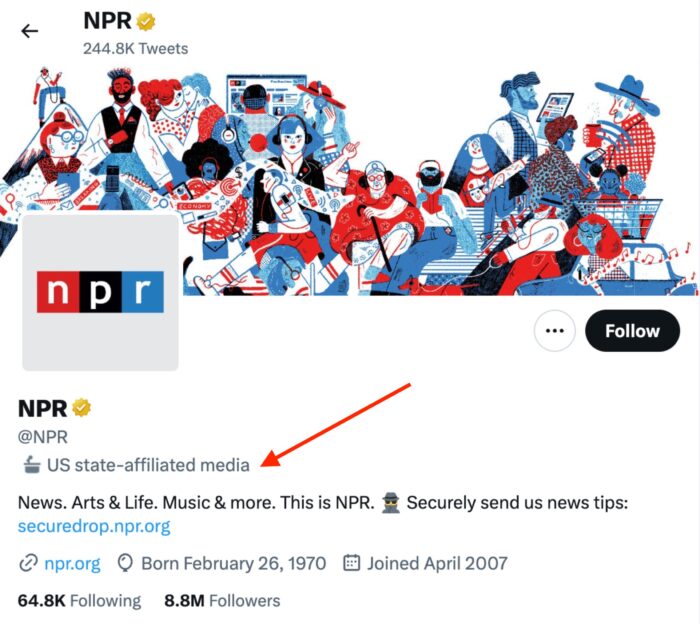
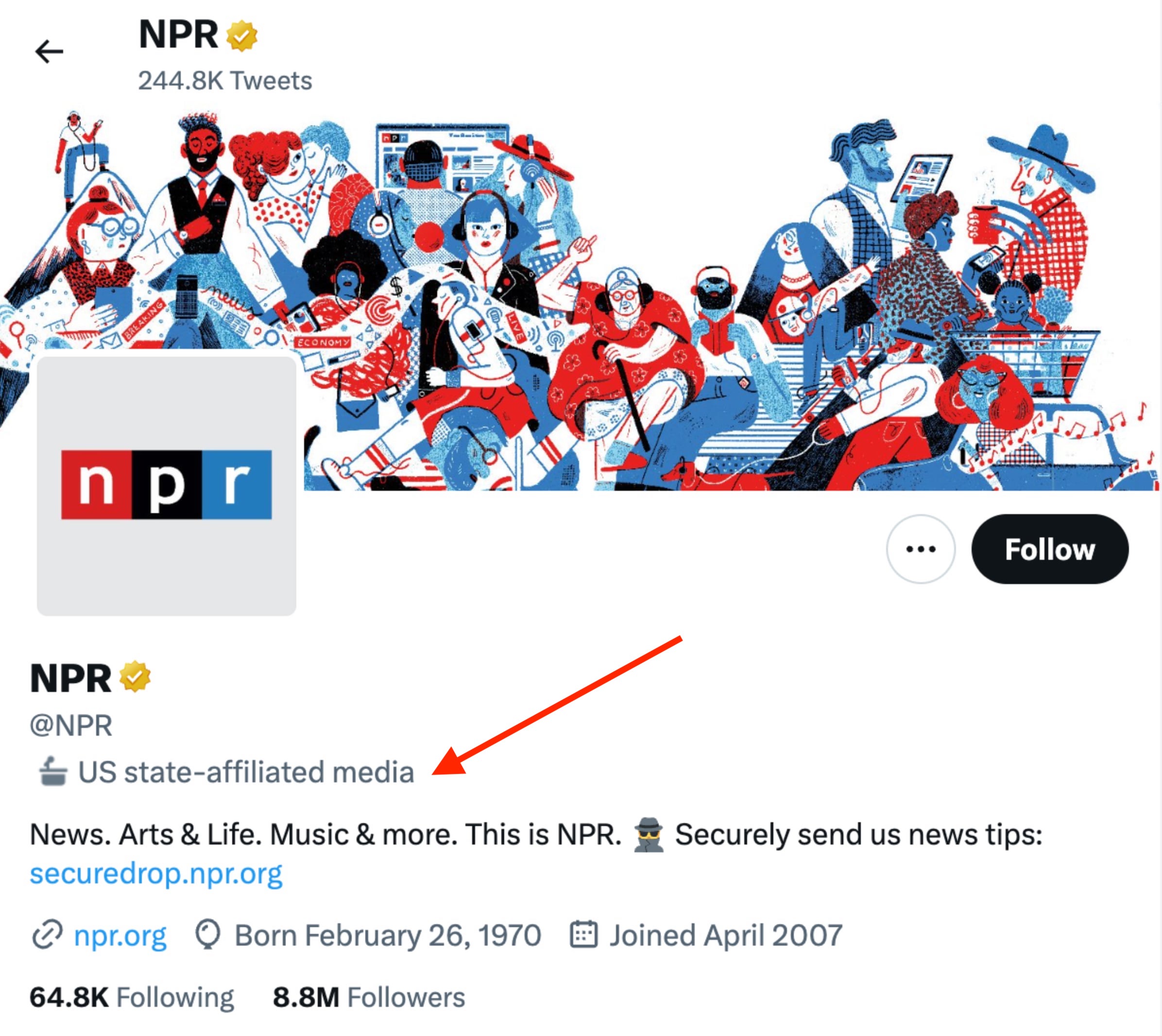
Twitter added a warning to NPR’s Twitter account on Tuesday, declaring it as “state-affiliated media,” a label that’s typically been reserved for foreign media outlets that represent the official views of the government, like Russia’s RT and China’s Xinhua.In fact, several people on Twitter pointed out that the social media company specifically said that news outlets like NPR are not state-affiliated media because they have editorial independence, despite getting some funds from the government. “State-affiliated media is defined as outlets where the state exercises control over editorial content through financial resources, direct or indirect political pressures, and/or control over production and distribution,” Twitter’s Help Center reads.
The explanation on Twitter’s website went on to call out NPR as an outlet that didn’t deserve the state-affiliated label. At least until recently. “Accounts belonging to state-affiliated media entities, their editors-in-chief, and/or their prominent staff may be labeled. State-financed media organizations with editorial independence, like the BBC in the UK or NPR in the US for example, are not defined as state-affiliated media for the purposes of this policy,” the Help Center continued.
That’s what it used to say as of Tuesday morning, according to the Internet Archive’s Wayback Machine. The website still mentions the BBC but the reference to NPR was deleted sometime Tuesday. Twitter responded to a request for comment late Tuesday with a poop emoji, an automated response set up by CEO Elon Musk. The billionaire, who bought Twitter back in October and took it private, has a combative relationship with the press.
Seems accurate pic.twitter.com/nx5TmJY7GX
— Elon Musk (@elonmusk) April 5, 2023
NPR:
On average, less than 1% of NPR’s annual operating budget comes in the form of grants from CPB and federal agencies and departments.
NPR is not state affiliated media. It is public media. The NYT is not propaganda. It is the most robust news organization in the English speaking world. The bias as to who is being targeted on this site by its leadership is so very clear. And it’s not a small thing. pic.twitter.com/K4h8kpsqkC
— Lulu (@lourdesgnavarro) April 5, 2023
Los Angeles Times, May 30, 2015:
Los Angeles entrepreneur Elon Musk has built a multibillion-dollar fortune running companies that make electric cars, sell solar panels and launch rockets into space. And he’s built those companies with the help of billions in government subsidies.Tesla Motors Inc., SolarCity Corp. and Space Exploration Technologies Corp., known as SpaceX, together have benefited from an estimated $4.9 billion in government support, according to data compiled by The Times. The figure underscores a common theme running through his emerging empire: a public-private financing model underpinning long-shot start-ups…
Musk and his companies’ investors enjoy most of the financial upside of the government support, while taxpayers shoulder the cost.
Musk made a stir last week when he said that the U.S. should “get rid of all” federal subsidies. “Just delete them all,” Musk, the world’s richest man, demanded during an interview at an event hosted by the Wall Street Journal last week…“My initial reaction is a rather derisive snort,” said Harold Feld, senior vice president at digital rights group Public Knowledge. “He should just say, ‘I don’t support federal subsidies for anyone else’ — there, I fixed it for you”…
Arlene Martinez, communications director at advocacy group Good Jobs First, said she was “cheered to hear Musk support ending his run of receiving huge, publicly funded federal subsidy packages.” “Surely he’d agree that he should stop extracting public money from local, regional and state governments too,” she added.
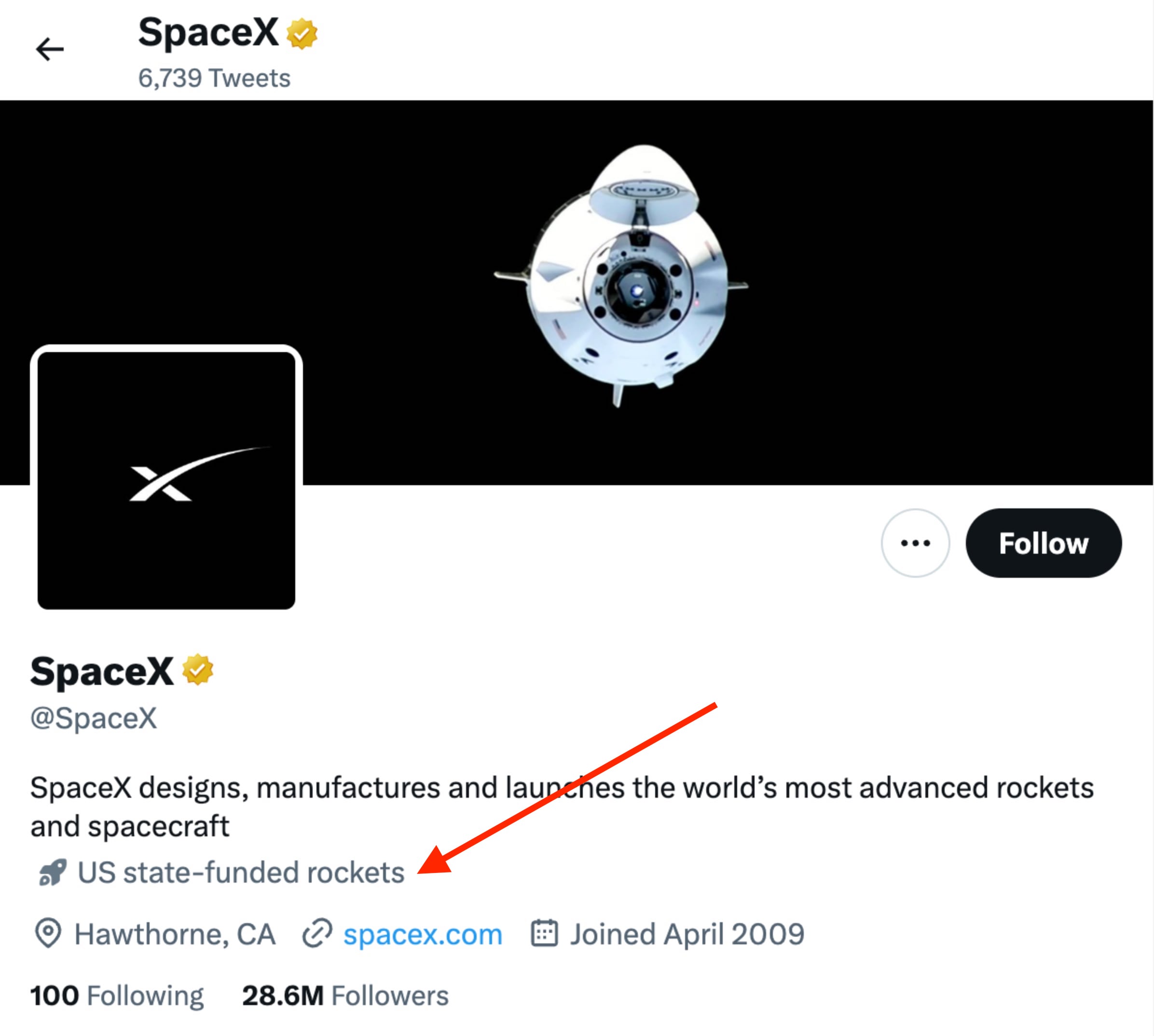
The Information, December 9, 2022:
[A Defense Department-funded satellite program named] Starshield is likely to deepen the dependence of the 20-year-old rocket company — the most valuable U.S. startup — on revenue from the federal government. While SpaceX is striving to build a commercial satellite internet business with Starlink, its bread and butter has long been contracts with NASA and other federal agencies to lob cargo and astronauts into orbit…SpaceX was awarded $2.2 billion and $2.8 billion in federal contracts in 2021 and 2022, respectively, the majority of which came from NASA, according to public records. Those figures also include its deals with the SDA contracts, but exclude any classified contracts.
GovConWire, September 1, 2022:
SpaceX has secured a potential eight-year, $1.4 billion contract modification to perform five more missions for NASA to transport crews to the International Space Station.The modification to the Commercial Crew Transportation Capability contract brings the total contract value with SpaceX to approximately $4.93 billion and covers ground, launch, in-orbit, lifeboat capability and cargo transportation for each mission and return and recovery operations, NASA said Friday.
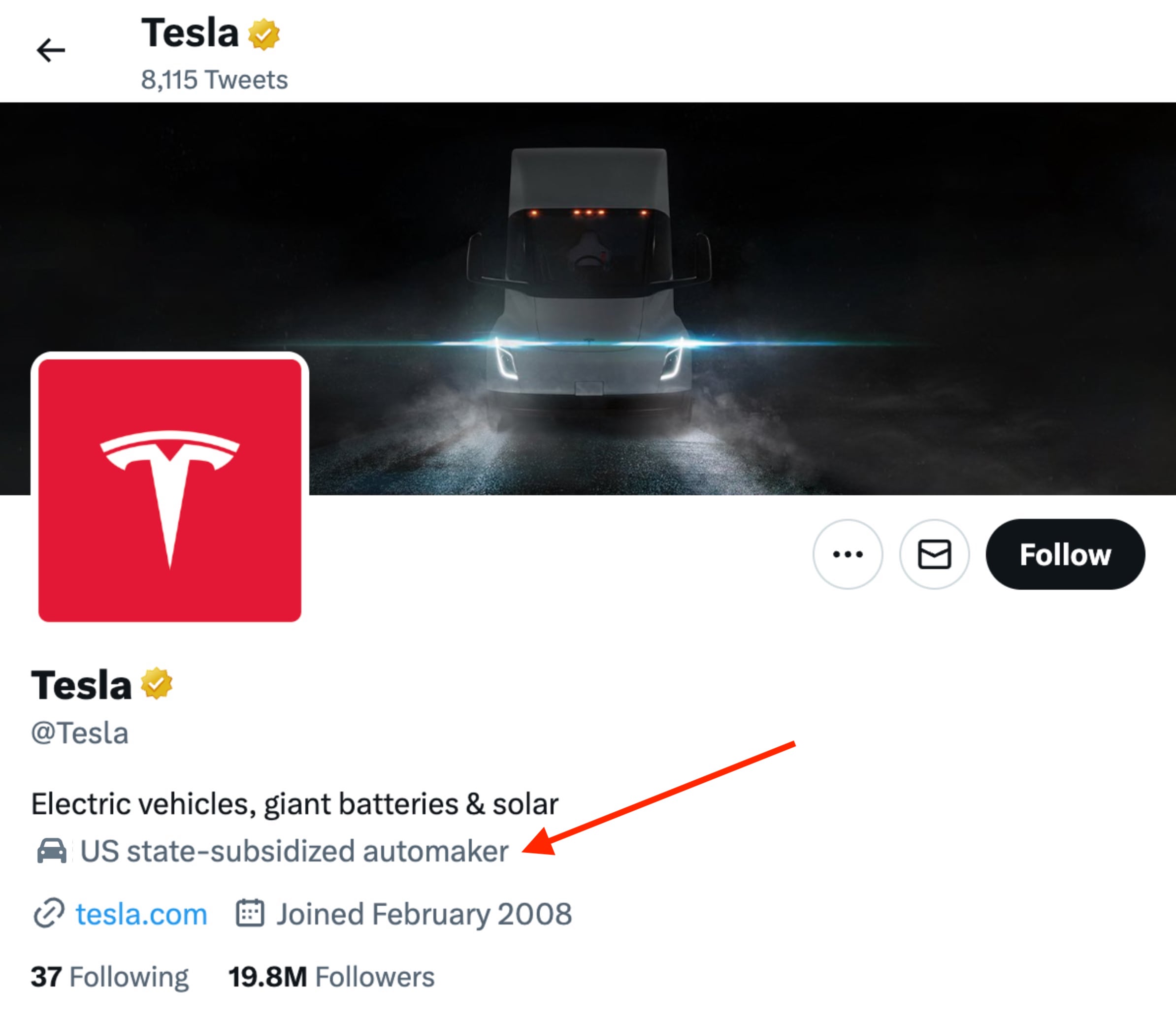
In a tweet [in 2020], Musk admitted that Tesla nearly was forced to file for bankruptcy as recently at 2019. The stock price that seems unstoppable today had been floundering among investor’s justified concern that the company was facing a cash crunch as it had difficulty ramping up production of its Model 3 sedan.“Closest we got [to bankruptcy] was about a month ago,” he said in that 2020 tweet. “The Model 3 ramp was extreme stress & pain for a long time — from mid 2017 to mid 2019. Production & logistics hell.”
What Musk didn’t say was that one of the keys that kept the company alive was the sale of regulatory credits to other automakers. Environmental regulations require companies that are not meeting emission standards to pay fines or buy credits generated by companies that comply with the rules. And no one had more of those credits to sell than all-electric Tesla.
Between 2008 and the first half of 2019, sales of regulatory credits generated more than $2 billion that was crucial to the company’s survival. And the increased car sales ever since have resulted in additional credits that Tesla sold for another $3 billion since June of 2019.
That allowed the company to show profits sooner than it would have without the credits, lifting the value of the stock. In fact it wasn’t until the second quarter [of 2021] that Tesla reported more in net income than it got from regulatory credit sales.
“It was really US taxpayers that helped get him through his roughest time,” said Dan Ives, tech analyst with Wedbush Securities who is a bull on Tesla shares — today. In 2019, he was still skeptical as the company struggled. “If it didn’t have regulatory credits, Tesla would not be the brand it is around the globe, and Musk wouldn’t be the richest person in the world,” Ives said.
Business Insider, December 15, 2021:
The federal government offers a $7,500 tax credit that car buyers can use to shave off some of the higher cost of purchasing an electric vehicle, which benefits Tesla as the industry’s pioneer. This made buying the cars at Tesla’s price points more feasible…The state of Nevada signed a package of bills in 2014 providing $1.3 billion in tax breaks and other incentives for Tesla. Nevada Governor Brian Sandoval wanted the electric car company to build a $5 billion lithium-ion battery factory in his state, called the “Gigafactory.” The deal also included tax credits and other incentives for 20 years. Reuters estimated this aspect of the deal was worth $725 million.
Reuters also projected that the company would save more than $300 million in payroll taxes, among other taxes, through 2024.
Government Technology, September 29, 2022:
Leaders of the Golden State have long sought credit for the success of the world’s largest electric-car manufacturer. But [California Gov. Gavin] Newsom took those claims to new heights in recent speeches, suggesting the state’s incentives are responsible for the emergence of Tesla.“There was no Tesla without California’s regulatory bodies, and regulation,” Newsom said during a Sept. 12 panel along alongside West Coast governors. He said the company has “been a beneficiary of well over a billion dollars of subsidies” that enabled it to “grow and dominate the electric vehicle space”…
The Chronicle asked the governor’s office to back up his claim that the company has received more than $1 billion in subsidies, and it turns out that Tesla has benefited from state assistance to an even larger degree than he suggested. Tesla has received more than $3.2 billion worth of direct and indirect California subsidies and market mechanisms since 2009, according to an estimate from Newsom’s office.
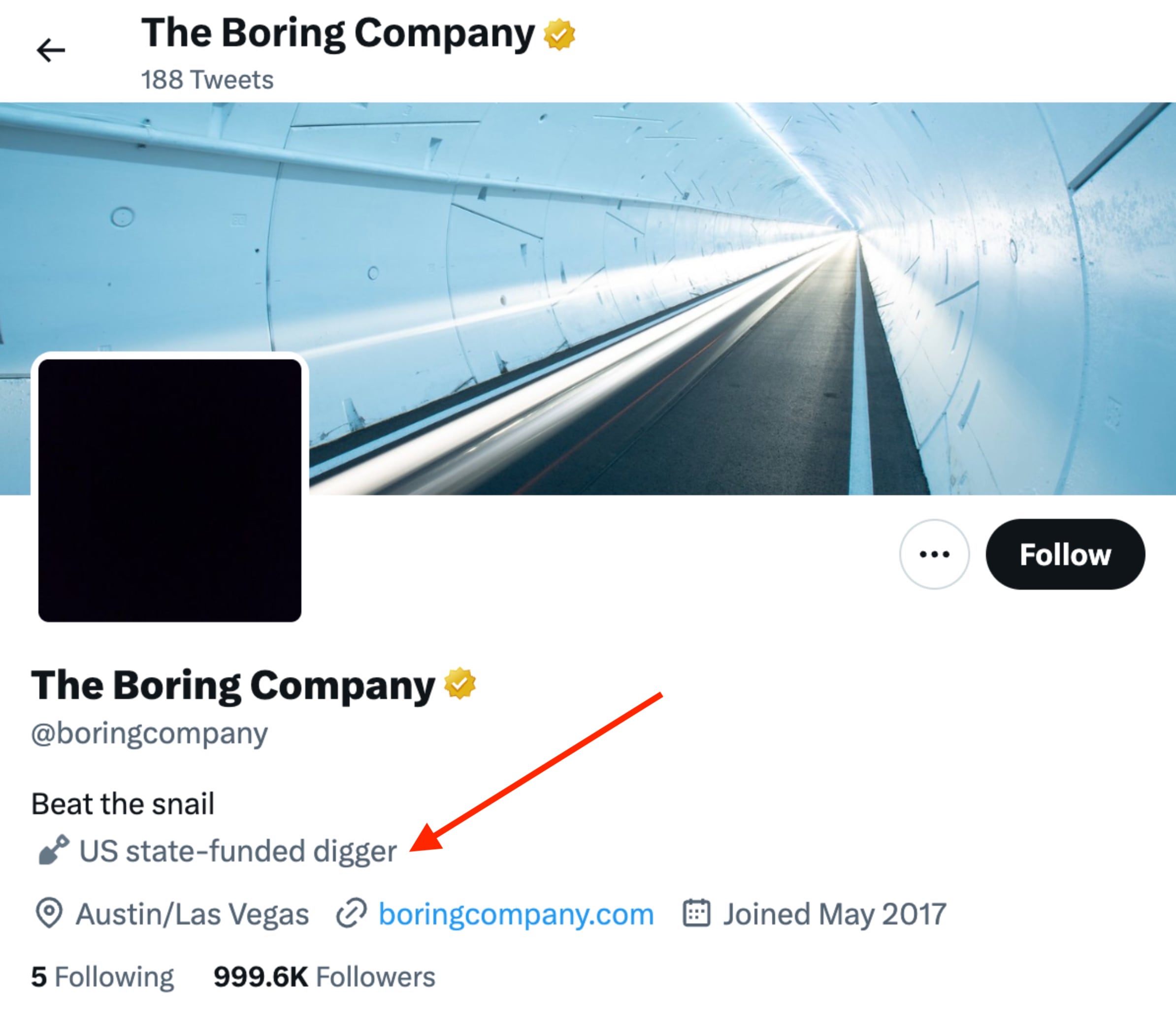
The Wall Street Journal, November 22, 2022:
The six-year-old [Boring Company] has repeatedly teased cities with a pledge to “solve soul-destroying traffic,” only to pull out when confronted with the realities of building public infrastructure, according to former executives and local, state and federal government officials who have worked with Mr. Musk’s Boring. The company has struggled with common bureaucratic hurdles like securing permits and conducting environmental reviews, the people said.“Every time I see him on TV with a new project, or whatever, I’m like: Oh, I remember that bullet train to Chicago O’Hare,” said Chicago Alderman Scott Waguespack. Boring had backed away from its proposal for a high-speed tunnel link to the airport there…
Boring has yet to make good on its most ambitious pitch: that it can design tunnel-boring machines that are so fast to operate that they will drive down costs and shake up the industry. Tunneling industry veterans question some of Mr. Musk’s claims…
Public officials across the country remain eager to land Boring projects, and some are eyeing the roughly $1 trillion federal infrastructure law as a source of potential funding.”